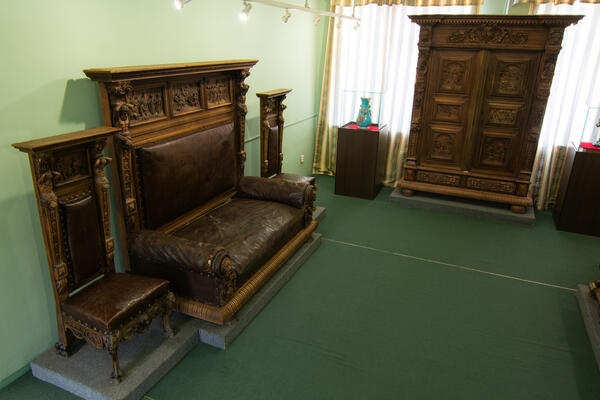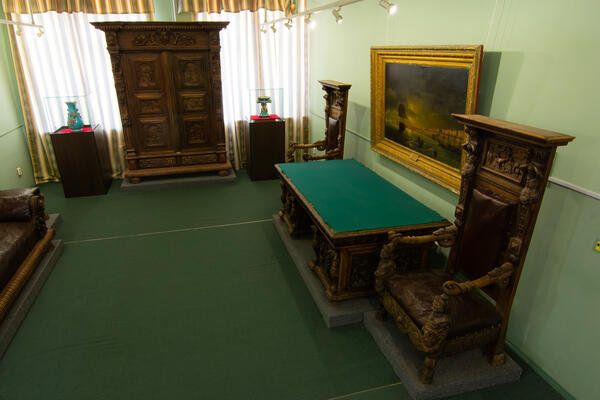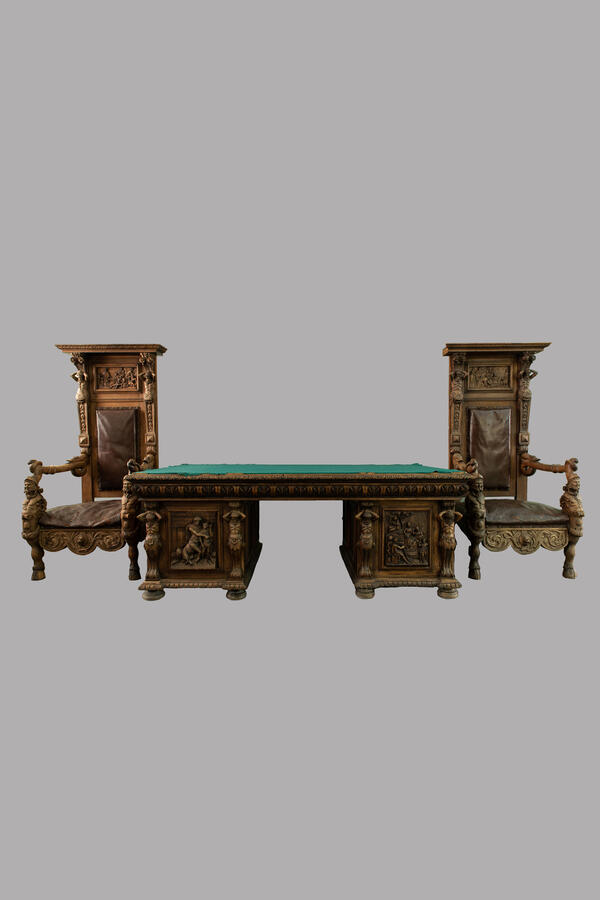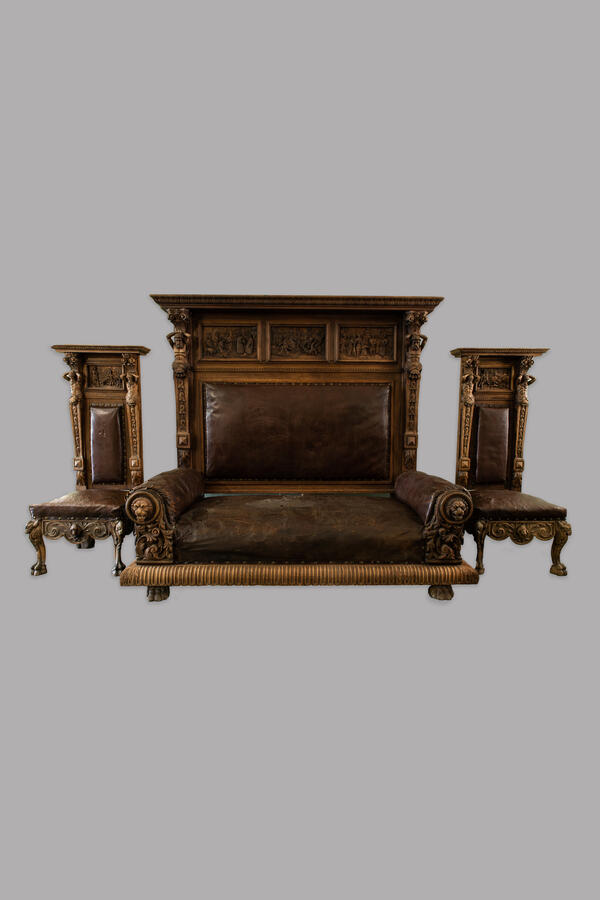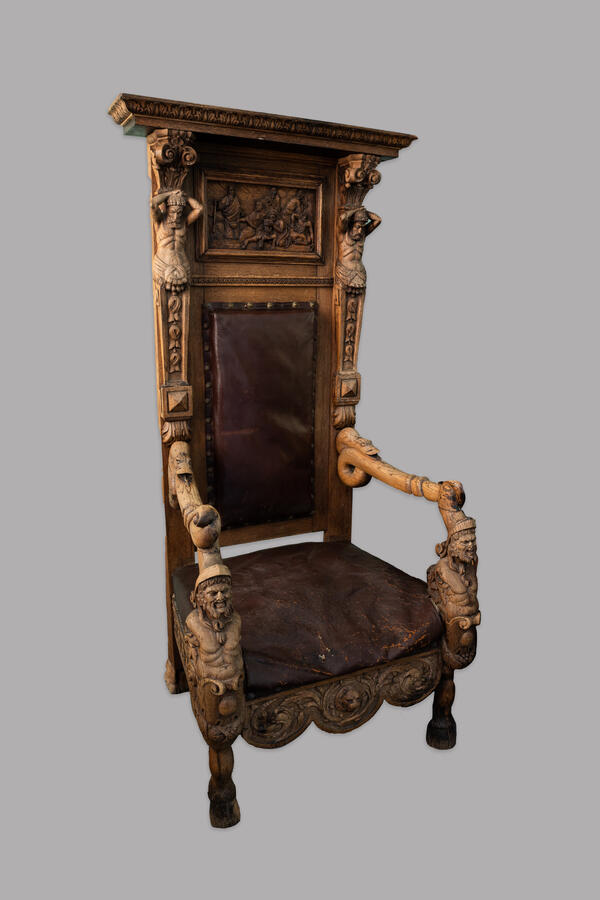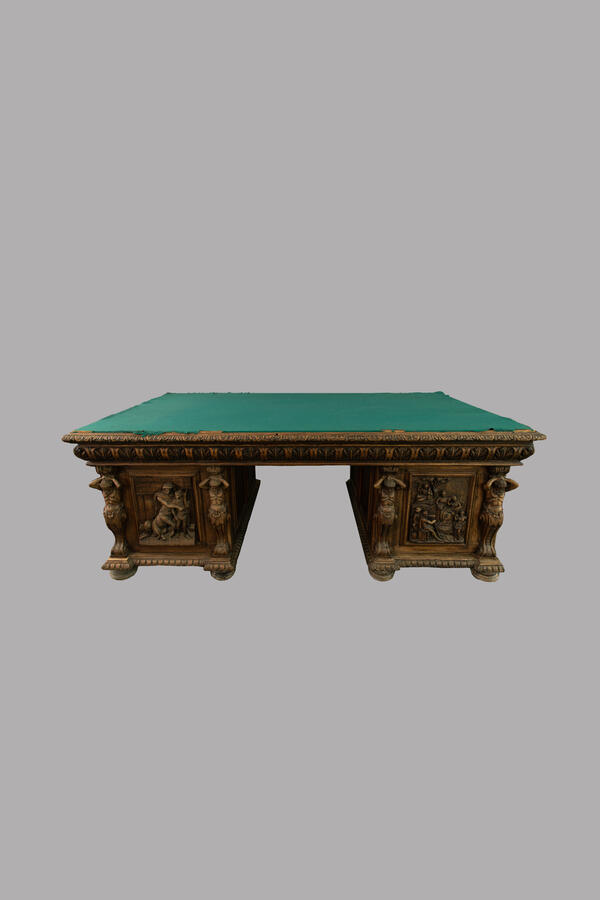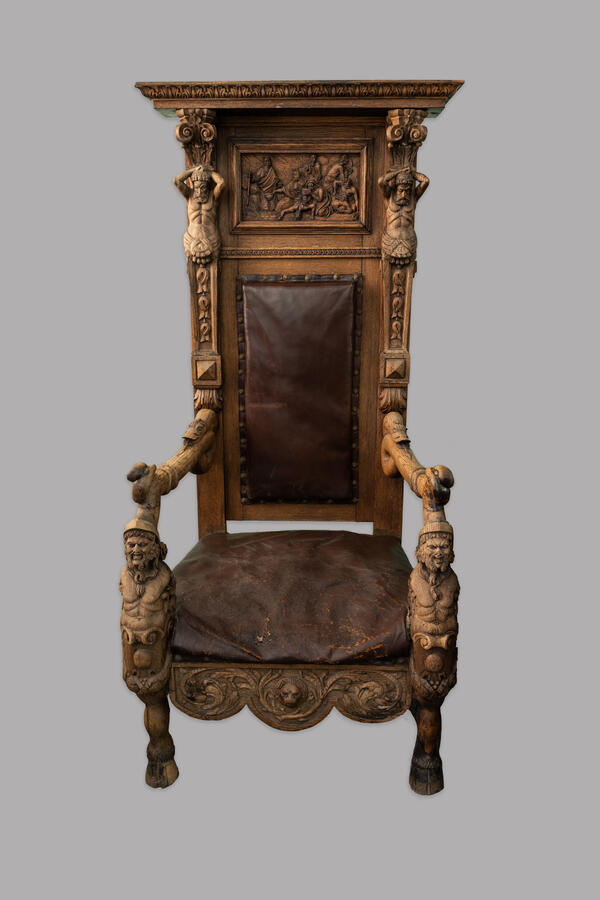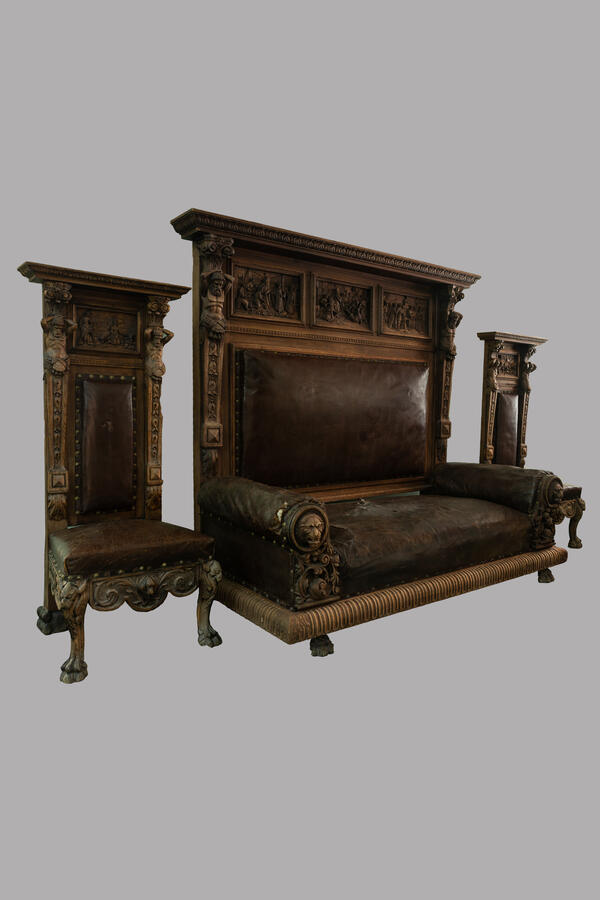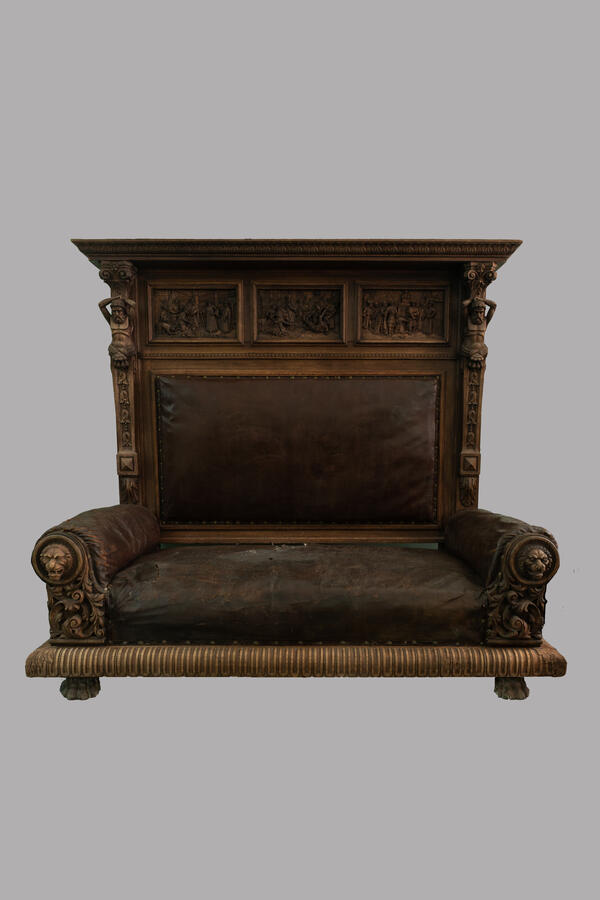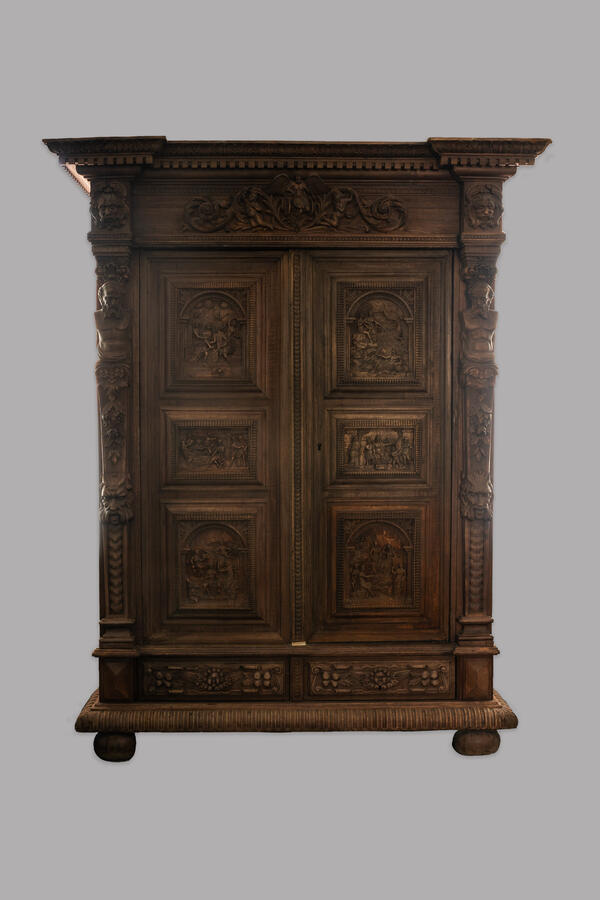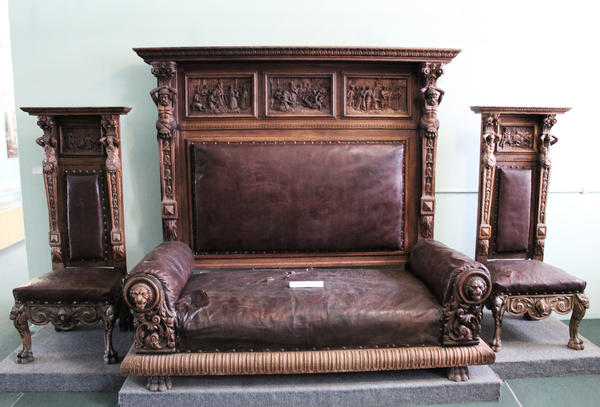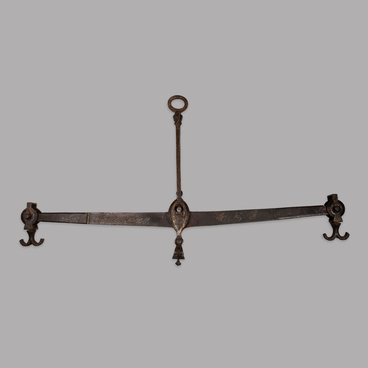The unique study room furniture set from the collection of the Lipetsk Regional Museum of Local Lore consists of nine items: a sofa, a two-pedestal desk, a double-door bookcase, two throne armchairs and four throne chairs. The set dates from the middle of the 19th century. It was made of oak and buffalo leather by Russian craftsmen imitating Western European furniture at the turn of the 18th century. The furniture was decorated with high relief carvings depicting mythological, biblical and historical subjects.
In April 1960, the set entered the museum from the Lipetsk Aviation Center. It is not known how and when this furniture appeared in the city, but there are several versions on this score.
In 1925–1933, there was a secret German aviation school in Lipetsk to train pilots. For many years there was a legend that the famous German pilot, a participant of World War I, the future Reichsmarschall Hermann Goering, visited the area. It is possible that he brought this set with him to equip his own office.
In 2005, an international conference was held in Lipetsk, which was dedicated to the German aviation school that had been located in the city. Researchers from Germany, who attended the conference, managed to provide evidence that Hermann Goering had never been to Lipetsk.
In addition, the examination, which was carried out by specialists from the State Historical Museum, established that the set was made by Russian artisans. This is confirmed by scenes from Russian history that were depicted on the back of the sofa.
These facts led to the assumption that the set could exist in one of the noble estates of the Lipetsk Territory. However, whatever the versions about the way the furniture had appeared in the aviation center, the set has never ceased to amaze with its large-scale dimensions, bizarre shapes, and unique carvings that adorn each item.
The massive cupboard has spherical shaped legs, drawers, a carved cornice, and its front corners were decorated with carved pilasters in the form of the Atlantean figures. There are decorative elements with carved images on the bookcase doors. The two-pedestal desk, armchairs and chairs were decorated with high reliefs featuring mythological and biblical scenes.
In April 1960, the set entered the museum from the Lipetsk Aviation Center. It is not known how and when this furniture appeared in the city, but there are several versions on this score.
In 1925–1933, there was a secret German aviation school in Lipetsk to train pilots. For many years there was a legend that the famous German pilot, a participant of World War I, the future Reichsmarschall Hermann Goering, visited the area. It is possible that he brought this set with him to equip his own office.
In 2005, an international conference was held in Lipetsk, which was dedicated to the German aviation school that had been located in the city. Researchers from Germany, who attended the conference, managed to provide evidence that Hermann Goering had never been to Lipetsk.
In addition, the examination, which was carried out by specialists from the State Historical Museum, established that the set was made by Russian artisans. This is confirmed by scenes from Russian history that were depicted on the back of the sofa.
These facts led to the assumption that the set could exist in one of the noble estates of the Lipetsk Territory. However, whatever the versions about the way the furniture had appeared in the aviation center, the set has never ceased to amaze with its large-scale dimensions, bizarre shapes, and unique carvings that adorn each item.
The massive cupboard has spherical shaped legs, drawers, a carved cornice, and its front corners were decorated with carved pilasters in the form of the Atlantean figures. There are decorative elements with carved images on the bookcase doors. The two-pedestal desk, armchairs and chairs were decorated with high reliefs featuring mythological and biblical scenes.

